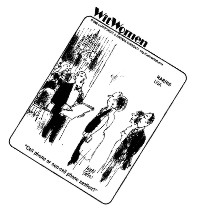Feature
Guidance To Read, And Beyond...
Tawsif Anam
 Teaching is guidance, and, purely in its own territory, is a matter of devotion. Not only does it require patience but also unhindered continuity. And certainly does it get the form of a challenge when it comes to teaching an illiterate teenager, without any idea of alphabets other than the consideration of words being decorating materials for banners, signboards, newspapers and colorful magazines, to read. Serving as a social worker in a charitable organization, and engaged in the virtuous campaign aimed at reducing illiteracy, a cousin of mine, significantly senior to me in age and matured in temperament, voluntarily took up the task of enabling an illiterate teenager to read. The experience of serving as a teacher previously brought along with it numerous advantages that strengthened his efforts at undertaking a task which, in my personal opinion and to which I know a multitude would be in agreement, is extremely tedious. Teaching is guidance, and, purely in its own territory, is a matter of devotion. Not only does it require patience but also unhindered continuity. And certainly does it get the form of a challenge when it comes to teaching an illiterate teenager, without any idea of alphabets other than the consideration of words being decorating materials for banners, signboards, newspapers and colorful magazines, to read. Serving as a social worker in a charitable organization, and engaged in the virtuous campaign aimed at reducing illiteracy, a cousin of mine, significantly senior to me in age and matured in temperament, voluntarily took up the task of enabling an illiterate teenager to read. The experience of serving as a teacher previously brought along with it numerous advantages that strengthened his efforts at undertaking a task which, in my personal opinion and to which I know a multitude would be in agreement, is extremely tedious.
Finally, the mission began as each evening my cousin sat at a suitable reading room with his previously underprivileged student, and guided him in the path of exploration of a whole new world of queer signs and their sequential correlation. The basic acts of pointing at the Bengali alphabets while trying to introduce one to them followed with repetition.
 After succeeding, though not with much accuracy in this particular case probably due to the haste of proceeding ahead, through the first phase of “learning to read”, came the point where the newly recognized words had to be neatly written down on paper. This gave further rise to the difficult job of demonstrating how to hold a pencil, but my cousin did that with much patience. I have already mentioned earlier that this was an exploration into a new world, and undoubtedly explorers need maps. Similarly, a map of dots had to be provided to the learner, so that he could successfully draw lines and curves following the dots, and complete the picture of alphabets. Devoted indeed was my cousin, and patiently performed his self-imposed duty. After succeeding, though not with much accuracy in this particular case probably due to the haste of proceeding ahead, through the first phase of “learning to read”, came the point where the newly recognized words had to be neatly written down on paper. This gave further rise to the difficult job of demonstrating how to hold a pencil, but my cousin did that with much patience. I have already mentioned earlier that this was an exploration into a new world, and undoubtedly explorers need maps. Similarly, a map of dots had to be provided to the learner, so that he could successfully draw lines and curves following the dots, and complete the picture of alphabets. Devoted indeed was my cousin, and patiently performed his self-imposed duty.
After passing through the second stage, there came the third, and probably the most important one. With each brick settled in proper place, the house had to be completed. Clotted alphabets now required to be arranged to form uncountable words that form the eternal ocean of language. The learner's curiosity now elevated and eagerly he followed his teacher, and started climbing upon the ladder of order and validity.
The teenage boy was then able to read, and also write, but it was at the end of this described process above that he started treading on the path of knowledge because knowledge begins with the recognition of ignorance. Seeds of inquisitiveness was sown in his mind by making him able to read and write satisfactorily. And despite being guided further upon the path of language, he was also, in a way, left alone beside the sea-shore with a raft, and given the freedom to drift across and explore.
|
